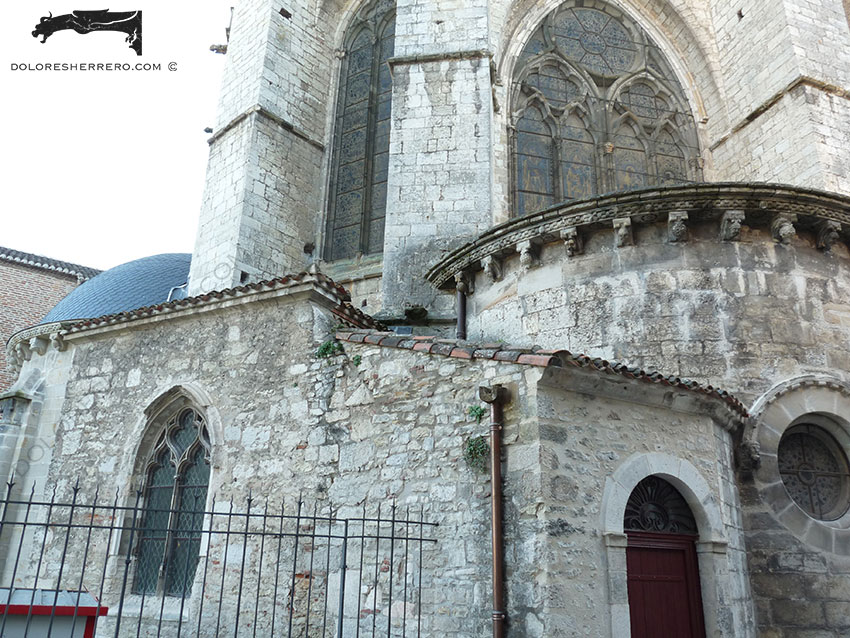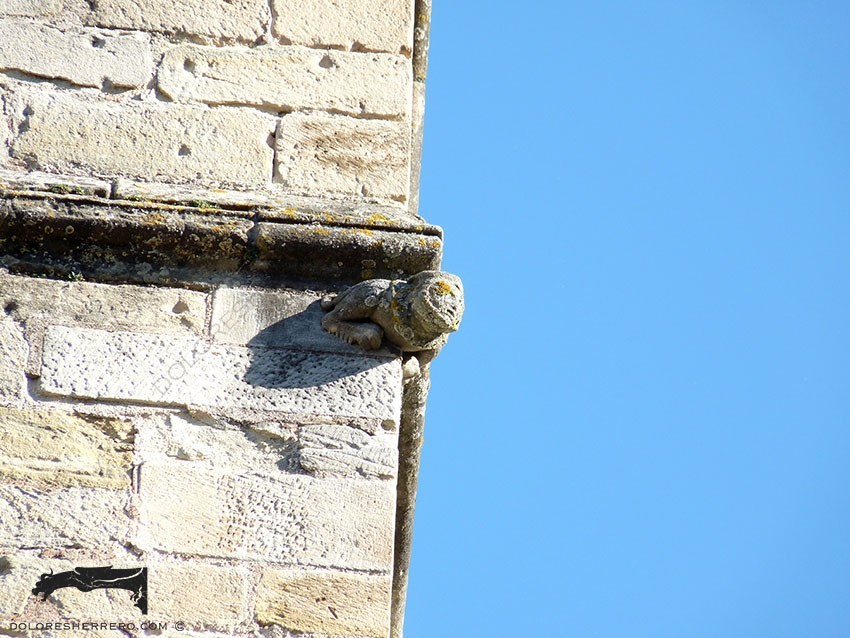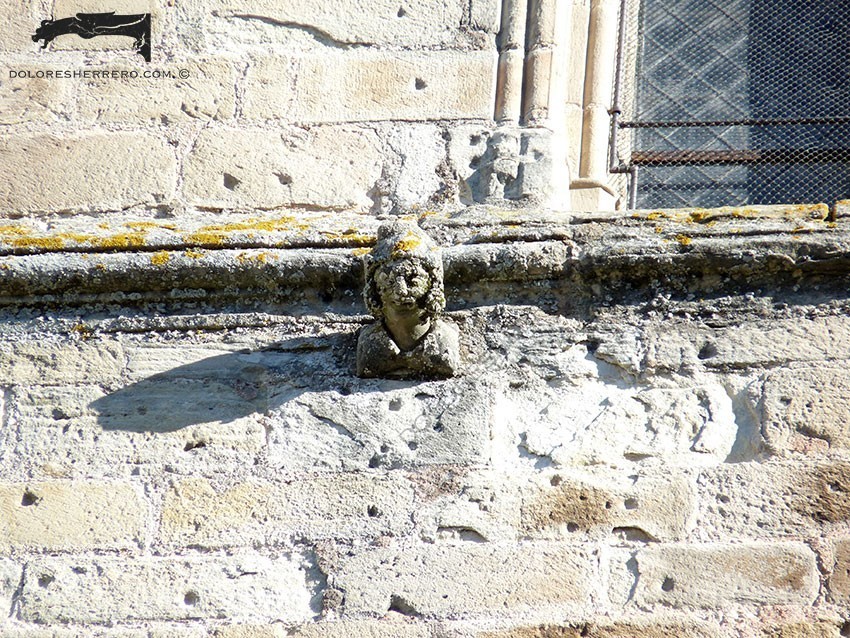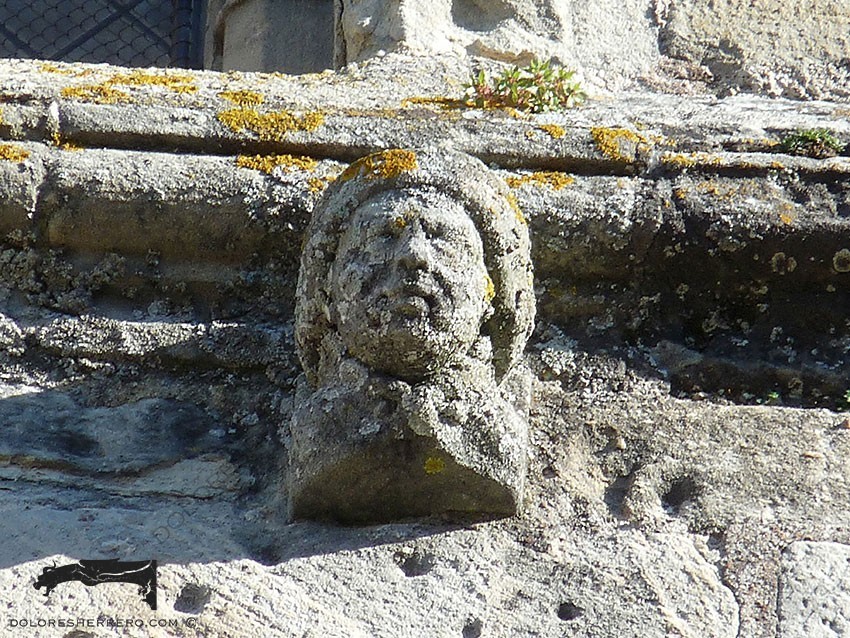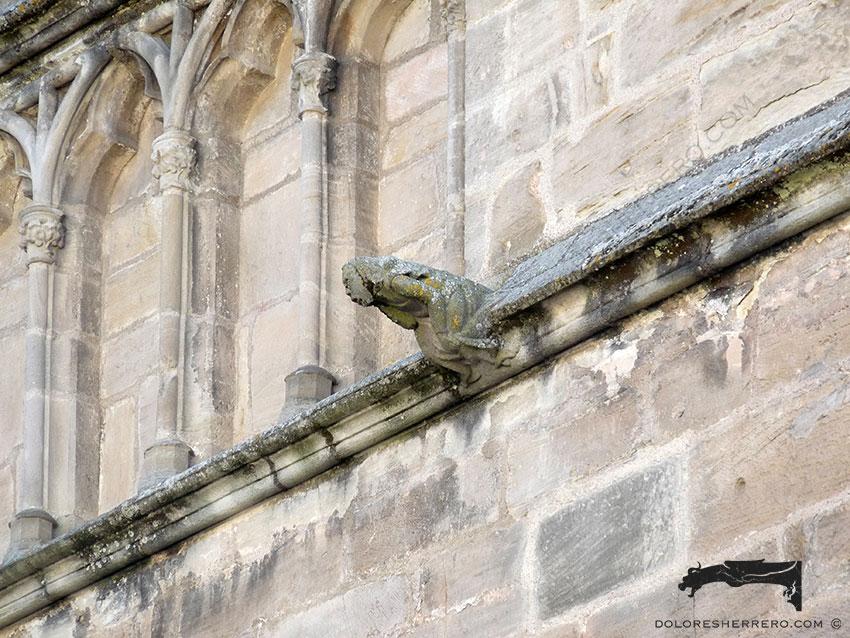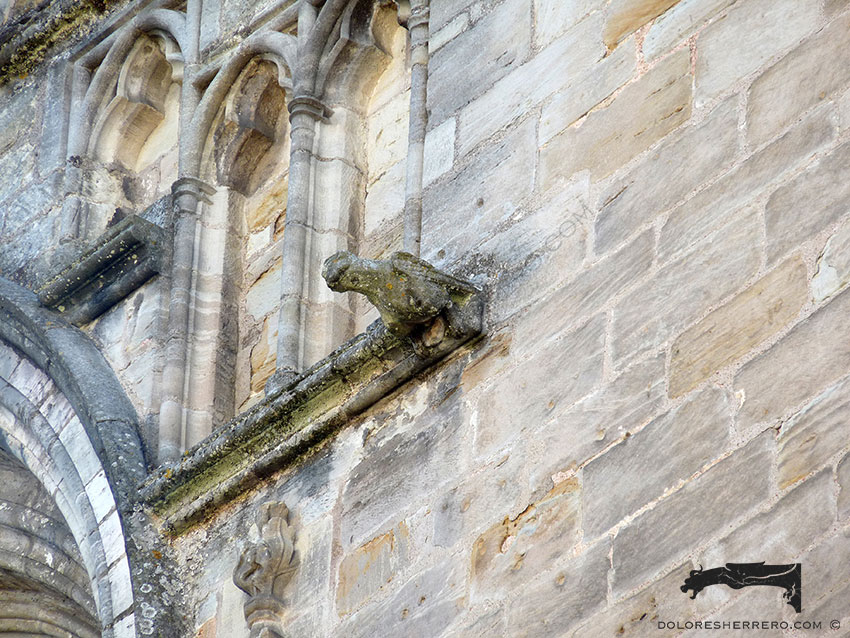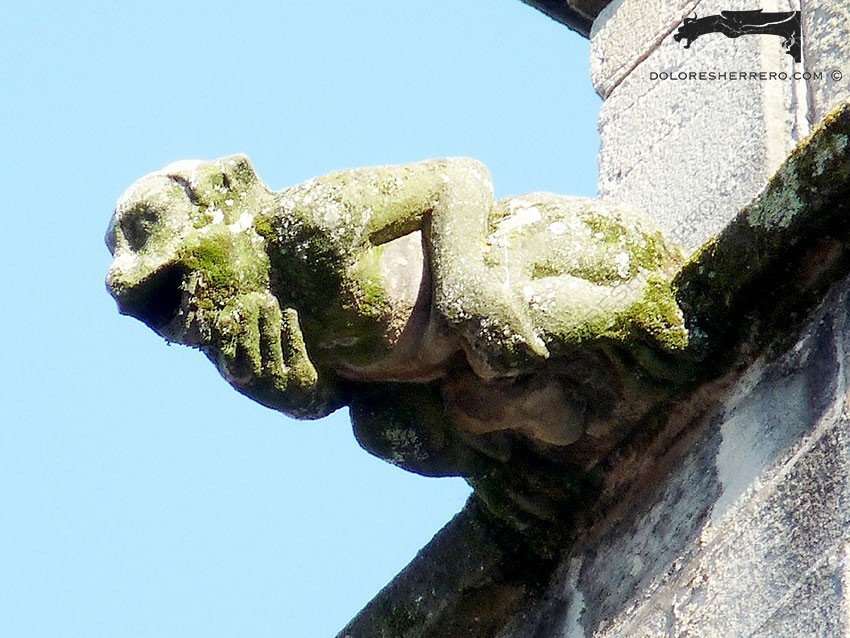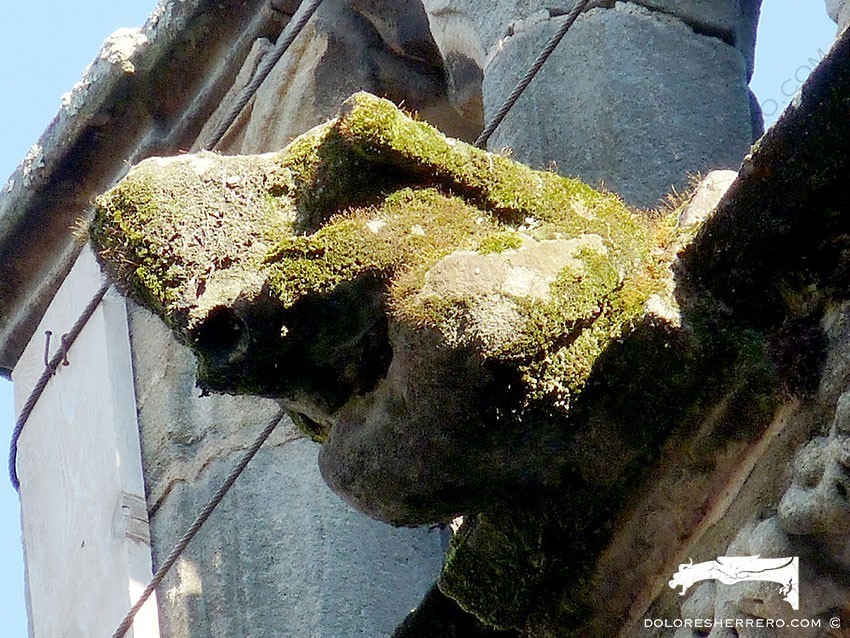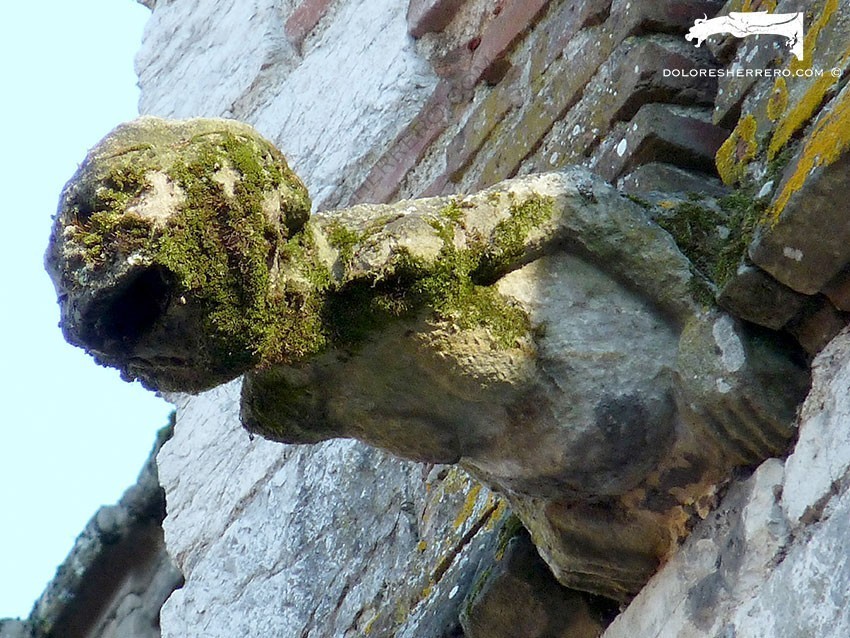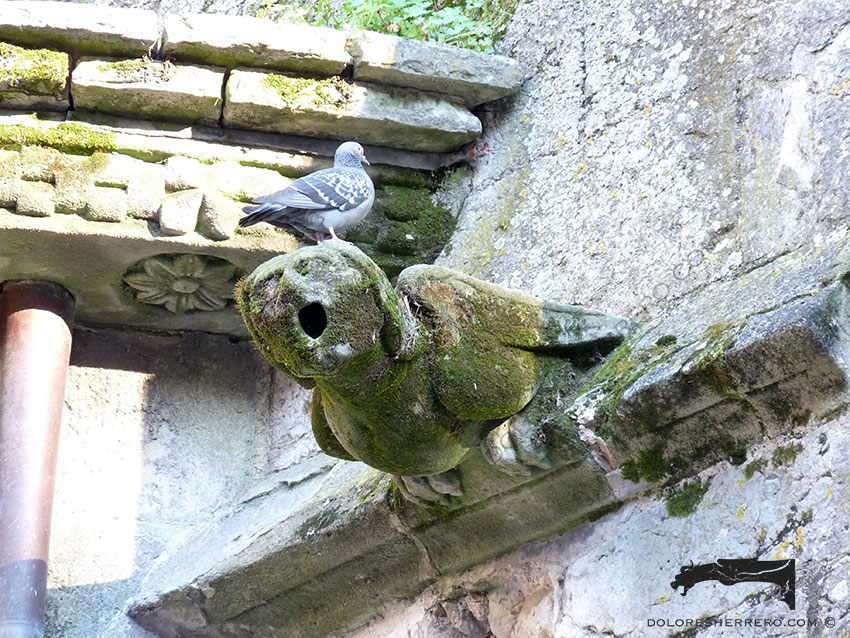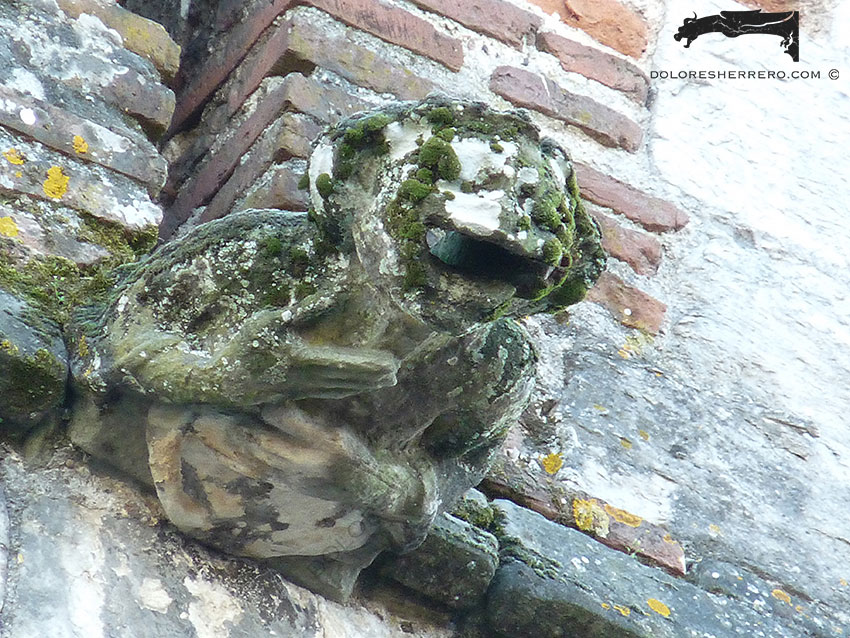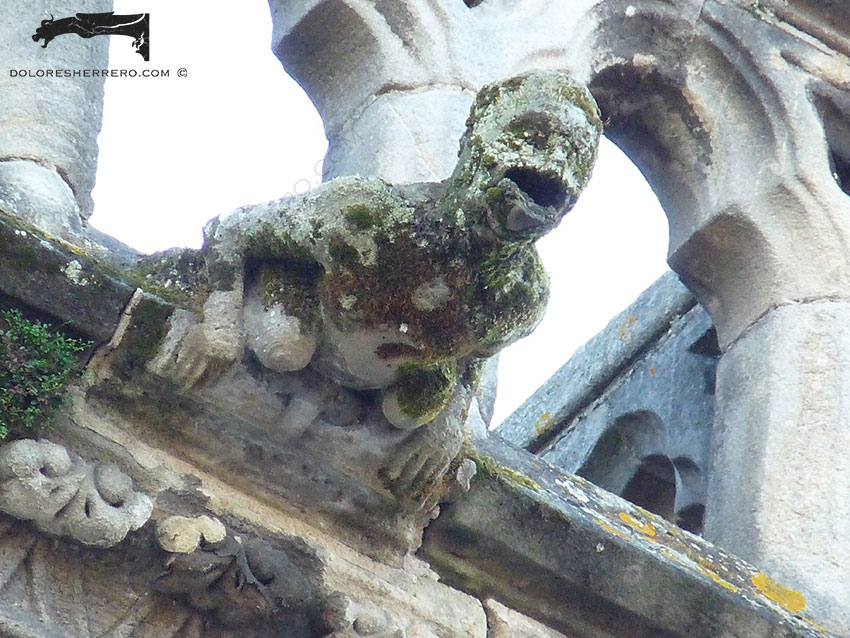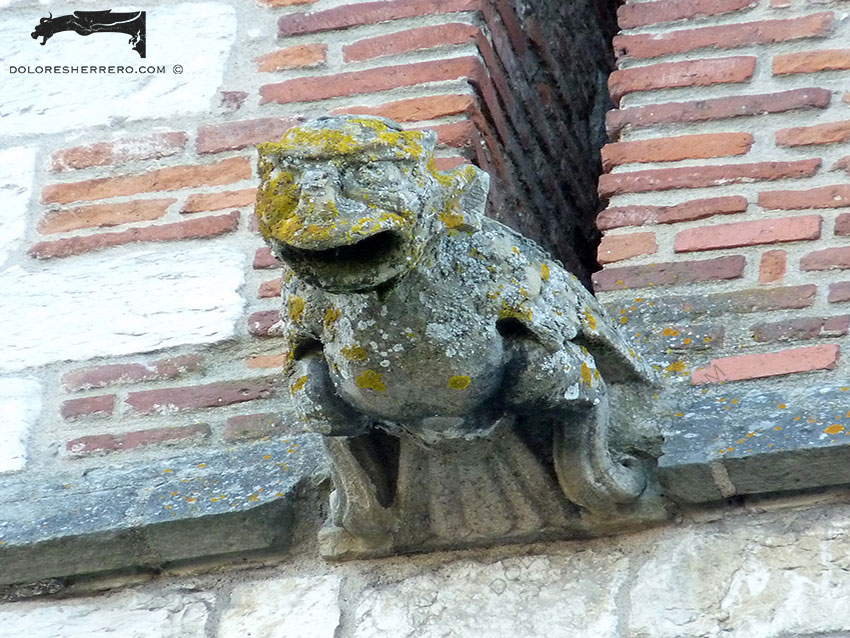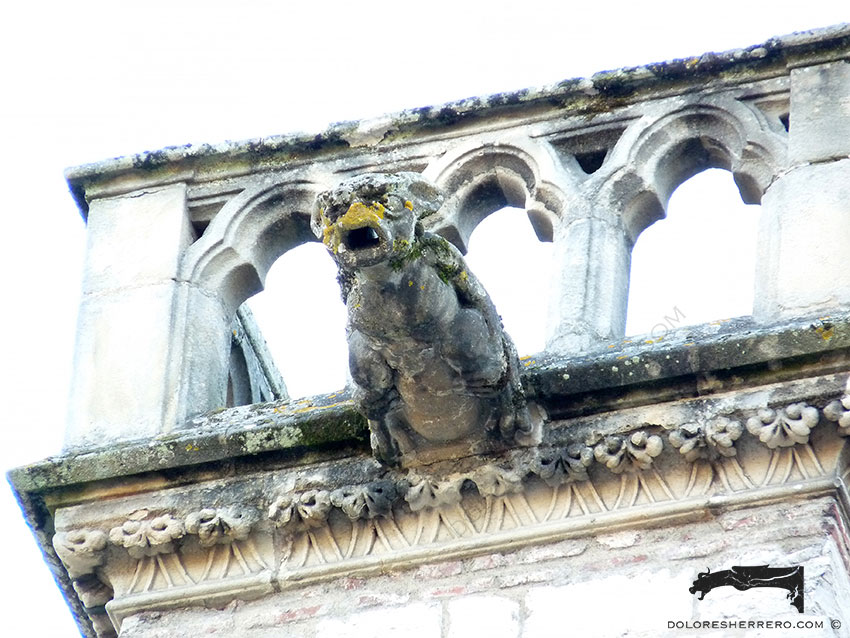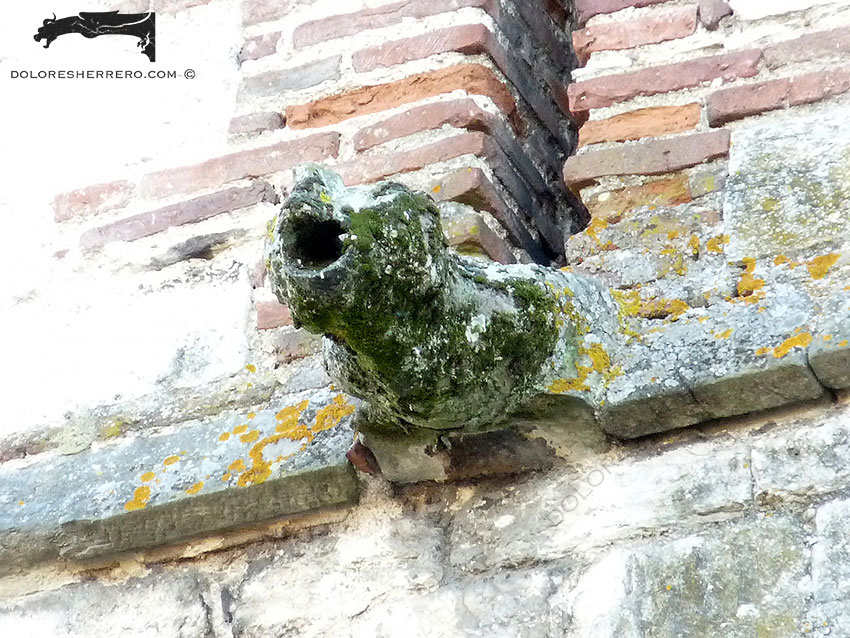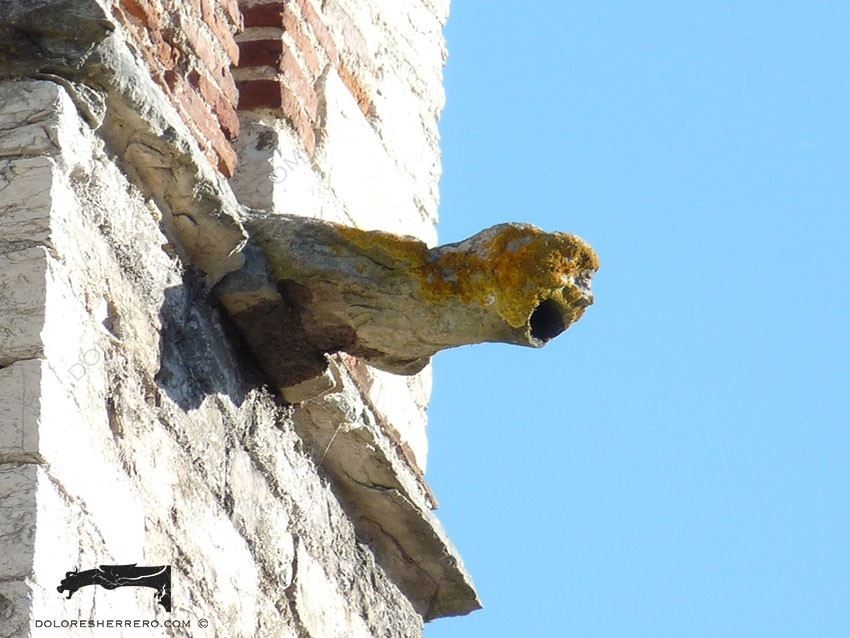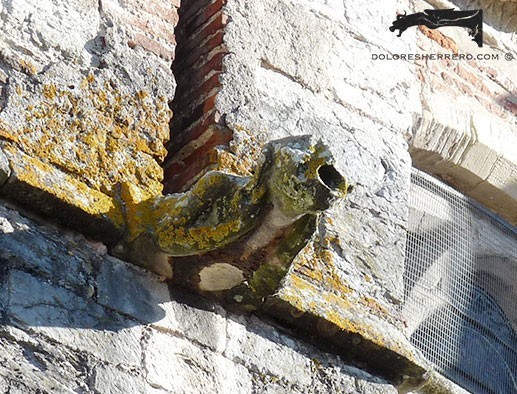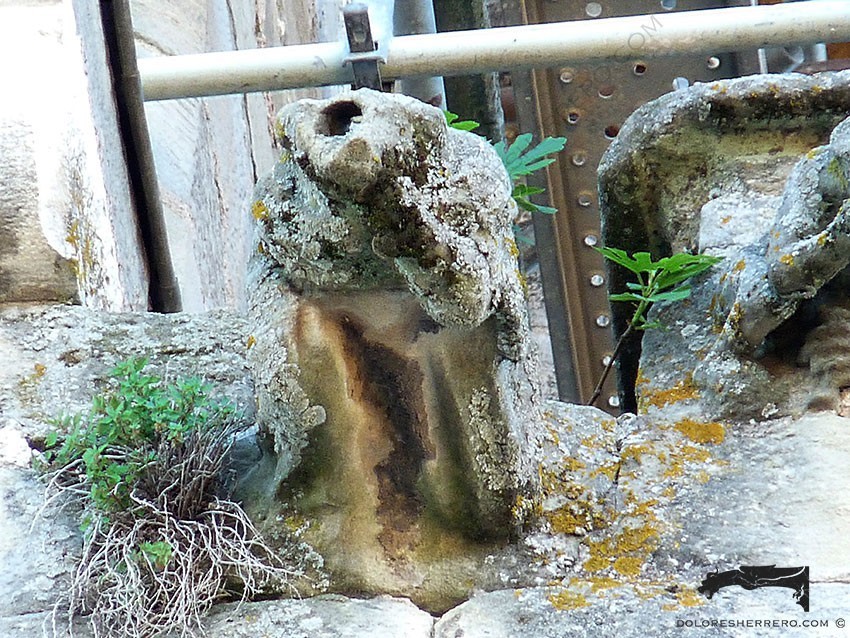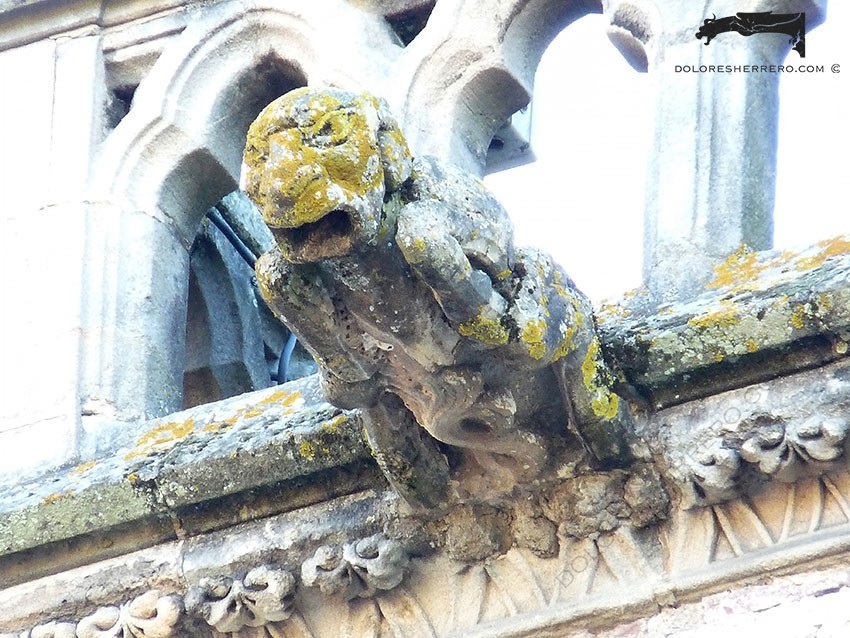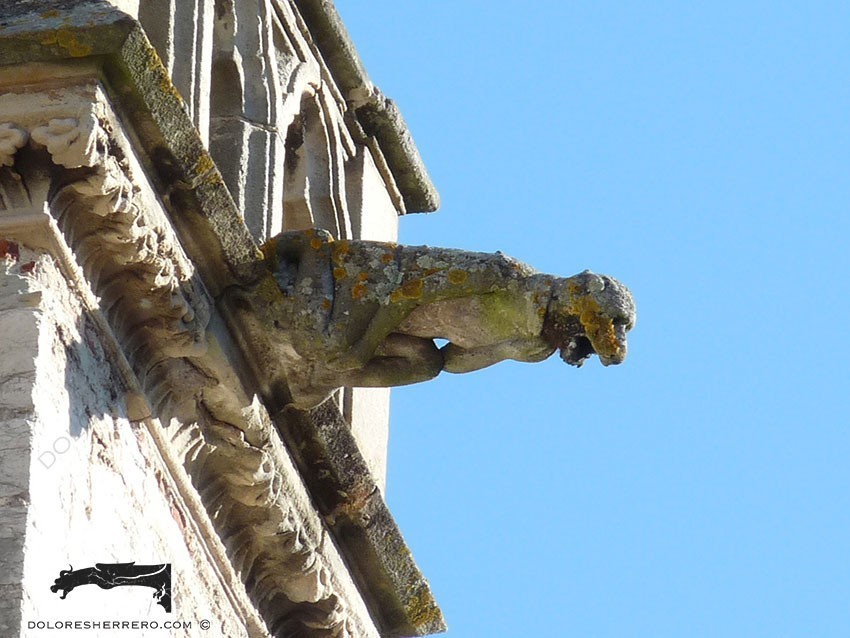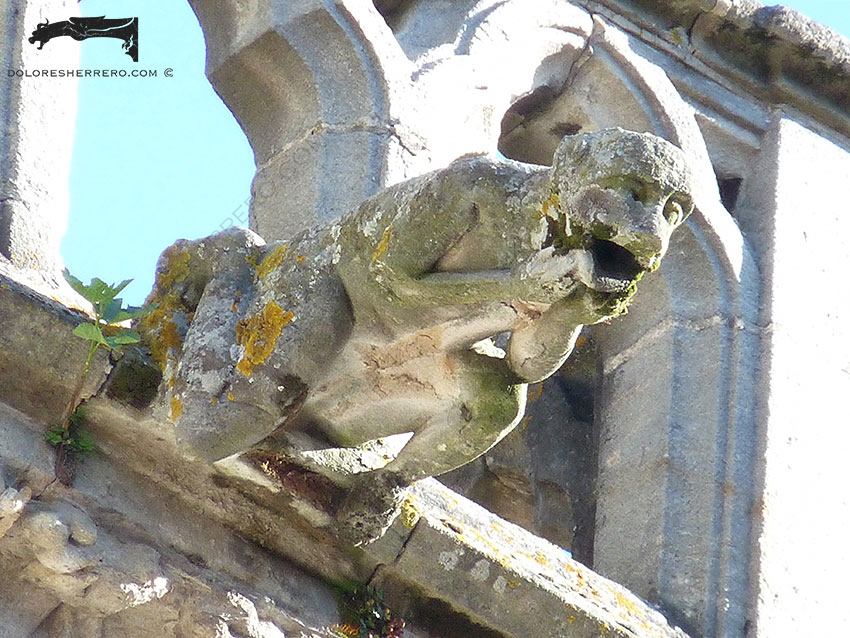We travel once again to France, a land of marvellous gargoyles, to discover some very special and different ones. They are in the city of Cahors, in the Occitania region, located in the Saint-Etienne Cathedral. This cathedral (12th to 15th century), in Romanesque and Gothic styles, apart from its superb domes, has an impressive cloister.
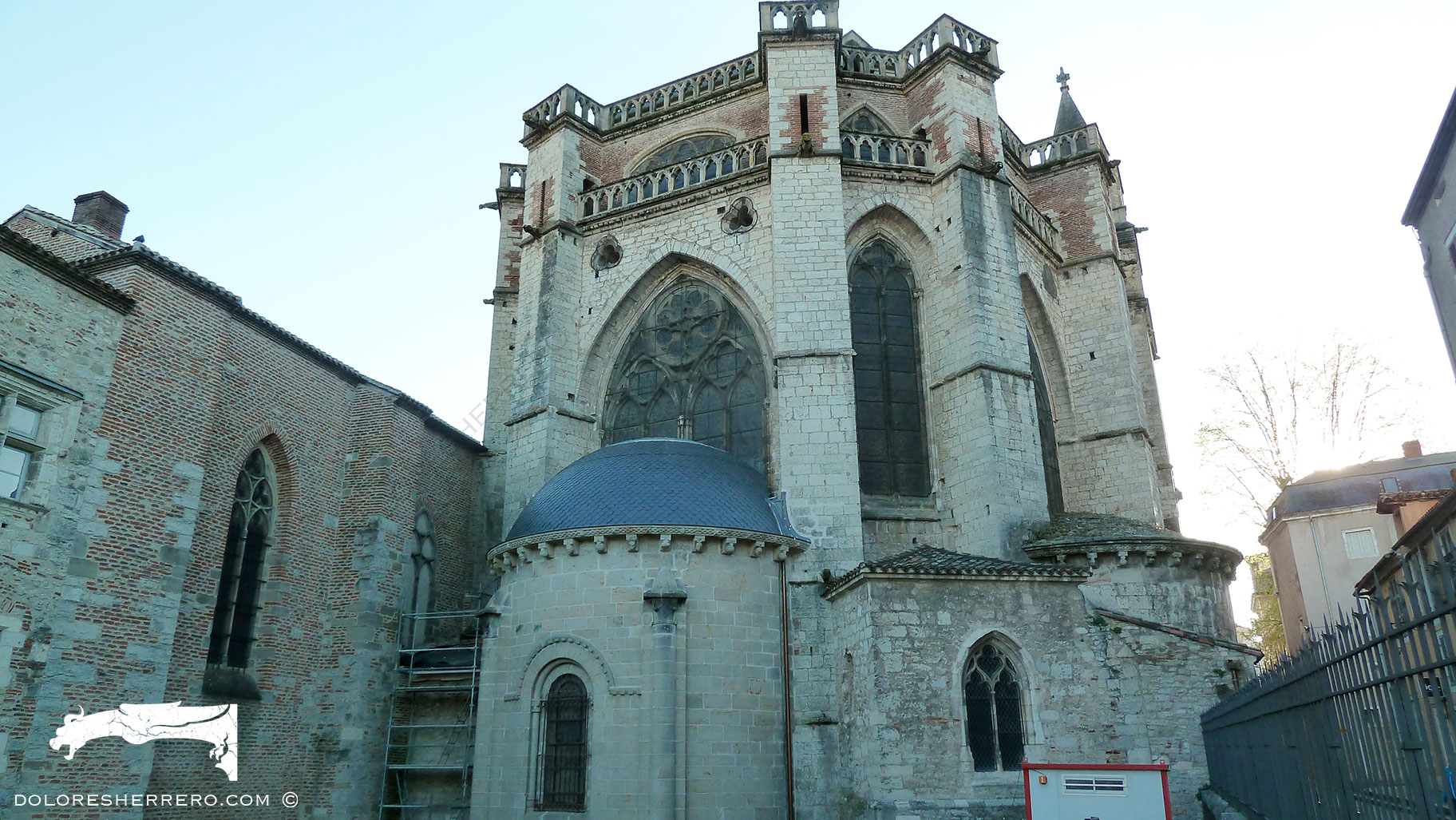
In addition to the gargoyles, you can see a large number of corbels and grotesques or chimeras in various parts of the cathedral, with very curious and interesting figures, both in form and theme.
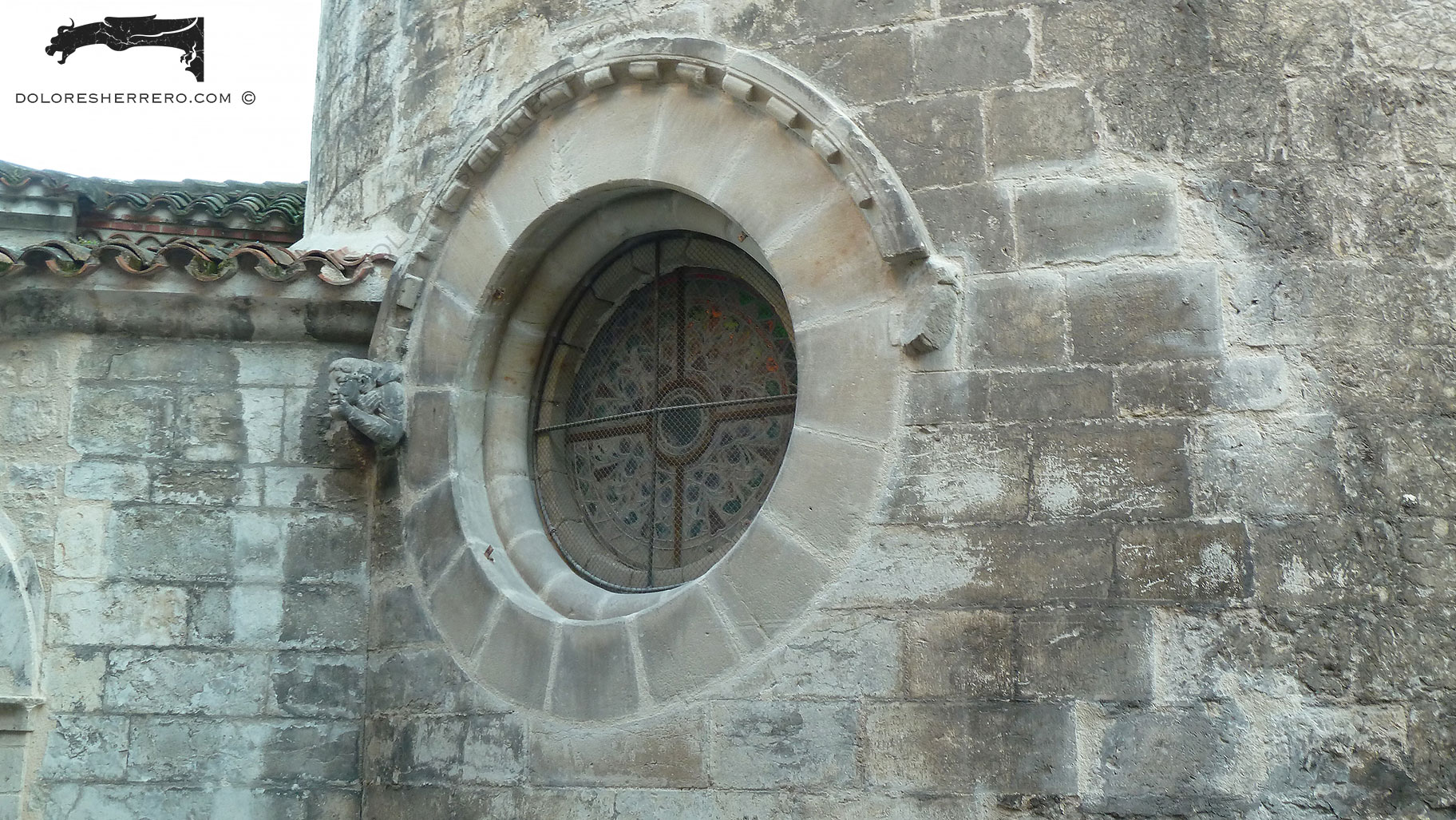
Its gargoyles: stone witnesses marked by moss and time
The gargoyles, although some are worn and deteriorated (those in a very bad condition will not be shown), are worth a closer look. We will discover them one by one, sometimes establishing an indicative typology, as it is difficult to pinpoint an exact typology for some of them, not only because of their deterioration, but also because several of them are notable for a combination of hybrid elements that give them a typology either dubious or involving a fusion, which means that some of them may belong to more than one typology.
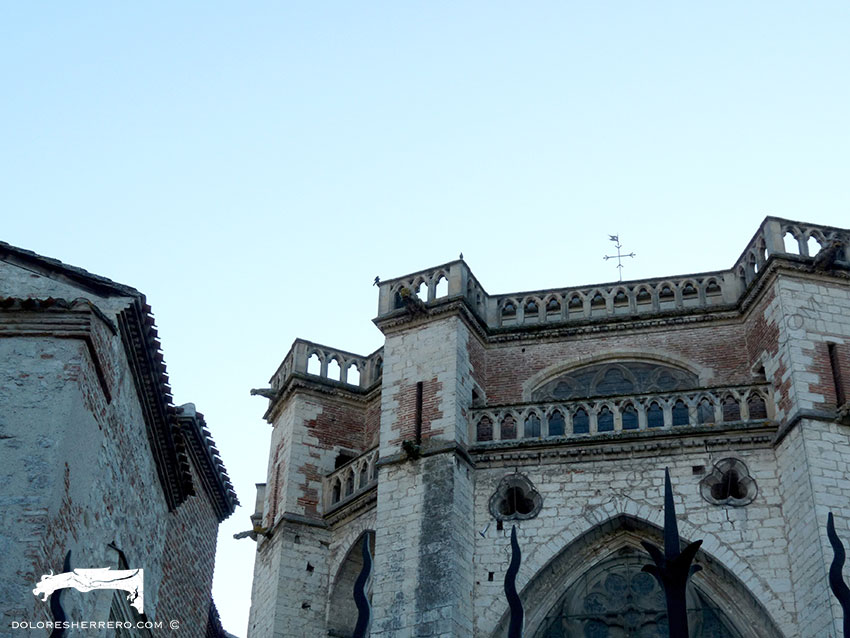
We shall begin with the representation of an ape, with its right hand on his face (chin) and its left hand resting on its knee. Underneath the figure is a lump, which is not clearly visible due to deterioration and which could be a small creature. It is common to see gargoyles with small creatures, sometimes baby animals suckling from a mammal depicted, and other times small companions with an evil or demonic content (always located in the lower, ”shameful” parts).
The next one is very worn, but we can see the apparently human outline of the head and the hands that he is holding in his mouth. He appears to be sitting or squatting.
In another we see a woman, with her arms across her body, naked (her breasts are visible), and with a medieval-style headdress on her head.
The next is a magnificent harpy, a simple figure of great sculptural beauty.
Next, we have a clothed human figure with a grotesque and somewhat monstrous head, holding his right hand to his neck/chest, and his left hand to his round, bulging belly (this could also be clothing).
To continue with the human gargoyles, there is a figure of a naked man showing his genitals, squatting and with his arms resting on the ledge.
An animal monster, a hybrid of various animal parts, has the body of a bird and a head with a large mouth and ears. Although it is a simple gargoyle, it is very expressive because of its fierce countenance, which gives it a demonic appearance, and it could therefore also be considered a small demon. The legs end in a spiral – a fantastic touch to an already imaginary, unreal figure.
Also with ears, in this case pointed, is a tremendous and expressive demon, seated or squatting, clutching its hind legs with human hands.
The following ones are difficult to recognise. Some have elements that belong to human typology (clothing, arms, faces), while others belong to animal typology. Their deterioration makes it difficult to classify them with certainty.
The last three gargoyles are impressive, both in form and subject matter. The first is a rampant ram, with a protruding tail and an absolutely demonic head.
The second is a dog with a collar. In this figure we again see hybrid elements, as it has the head and collar of a dog, but the body is human, especially in the posture and gestures of the hands and legs, so it could also be considered an anthropomorphic figure.
Finally, we have a naked man, with one knee resting on the ground and his hands on his face.
Often, we discover completely different and unique gargoyles, such as the ones we have just seen. Despite the deterioration of some of them, we can see that they were all originally magnificent gargoyles. And this deterioration does not prevent us from appreciating their expressiveness and their formal and typological quality.
The gargoyles of Cahors possess something mysterious and hidden, something concealed by the veil that envelops them, that magical moss of fresh, intense green that masks, curtain-like, the deterioration caused by time.
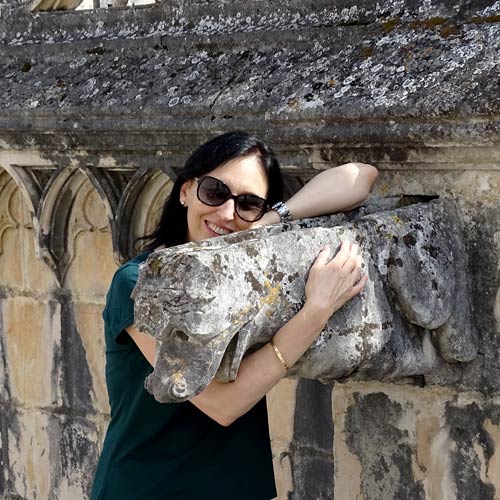
Doctor of Art History and researcher specializing in the study of gargoyles.
I am Dolores Herrero Ferrio, and my thesis, “An Approach to the Study of Gargoyles of Gothic Cathedrals in Castilla and León”, is dedicated to the study of these fascinating figures.
If you like gargoyles and art history, you will also enjoy my book, “The Gargoyle and Its Iconography,” a book I have written with great care for those interested in the world of gargoyles.
I have created my own Encyclopedia of Gargoyles, a Gargopedia to share with you, where you will discover all the secrets and wonders of these enigmatic sculptures.
I hope you enjoy this Gargopedia as much as I have enjoyed creating it, and remember that each gargoyle has a story to tell, and here you will discover them all.
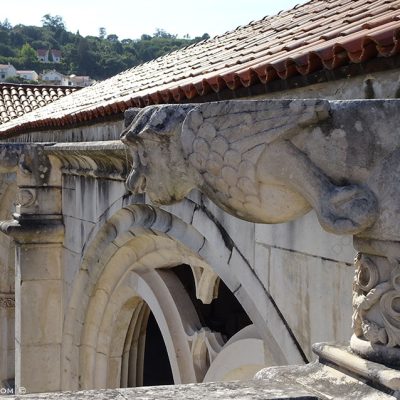 The Gargoyles of the Monastery of Alcobaça: Stone Art in Portugal
The Gargoyles of the Monastery of Alcobaça: Stone Art in Portugal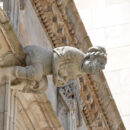 The ‘Chimera Gargoyles’ of the Patio de los Naranjos: Fantastic Creatures in the Palau de la Generalitat in Barcelona
The ‘Chimera Gargoyles’ of the Patio de los Naranjos: Fantastic Creatures in the Palau de la Generalitat in Barcelona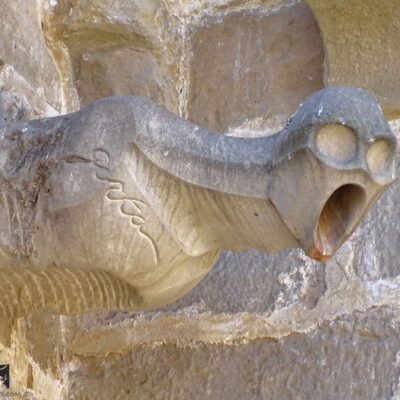 Gargoyles of the Church of Santa María la Mayor in Valderrobres (Teruel, Spain)
Gargoyles of the Church of Santa María la Mayor in Valderrobres (Teruel, Spain)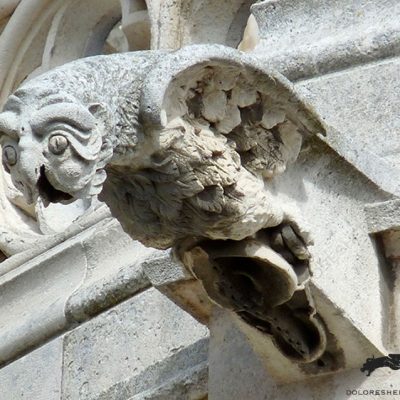 Gargoyles and Unusual Animals: Part One
Gargoyles and Unusual Animals: Part One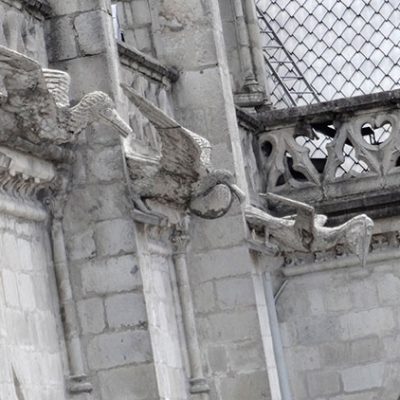 Gargoyles of Quito (Ecuador): Animal Sculptures in Andean Architecture
Gargoyles of Quito (Ecuador): Animal Sculptures in Andean Architecture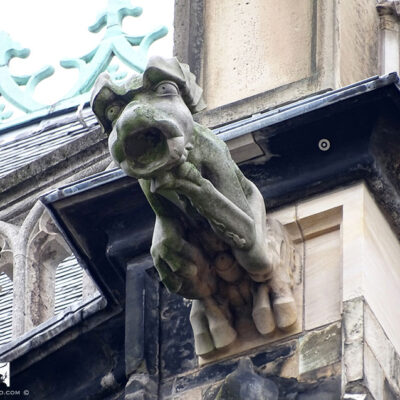 The Amazing Gargoyles of Aachen Cathedral
The Amazing Gargoyles of Aachen Cathedral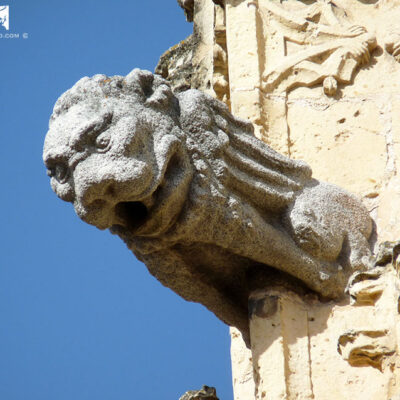 The Exceptional Gargoyles of the Segovia Cathedral
The Exceptional Gargoyles of the Segovia Cathedral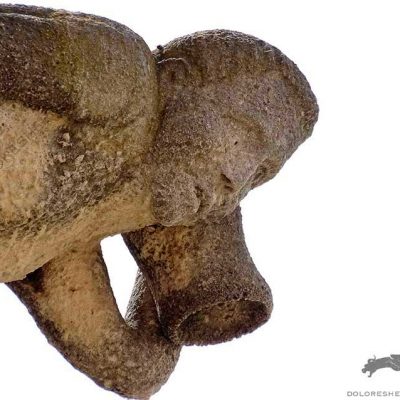 Gargoyles Looking out to Sea
Gargoyles Looking out to Sea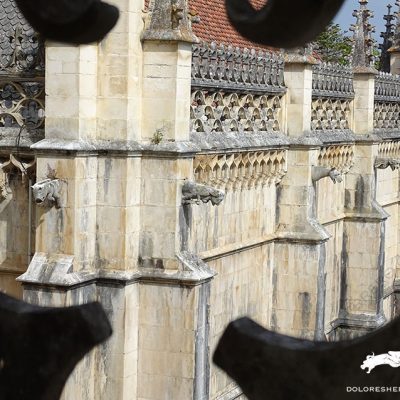 Gargoyles and Their Typologies: An Introduction to Their Multiple Forms
Gargoyles and Their Typologies: An Introduction to Their Multiple Forms